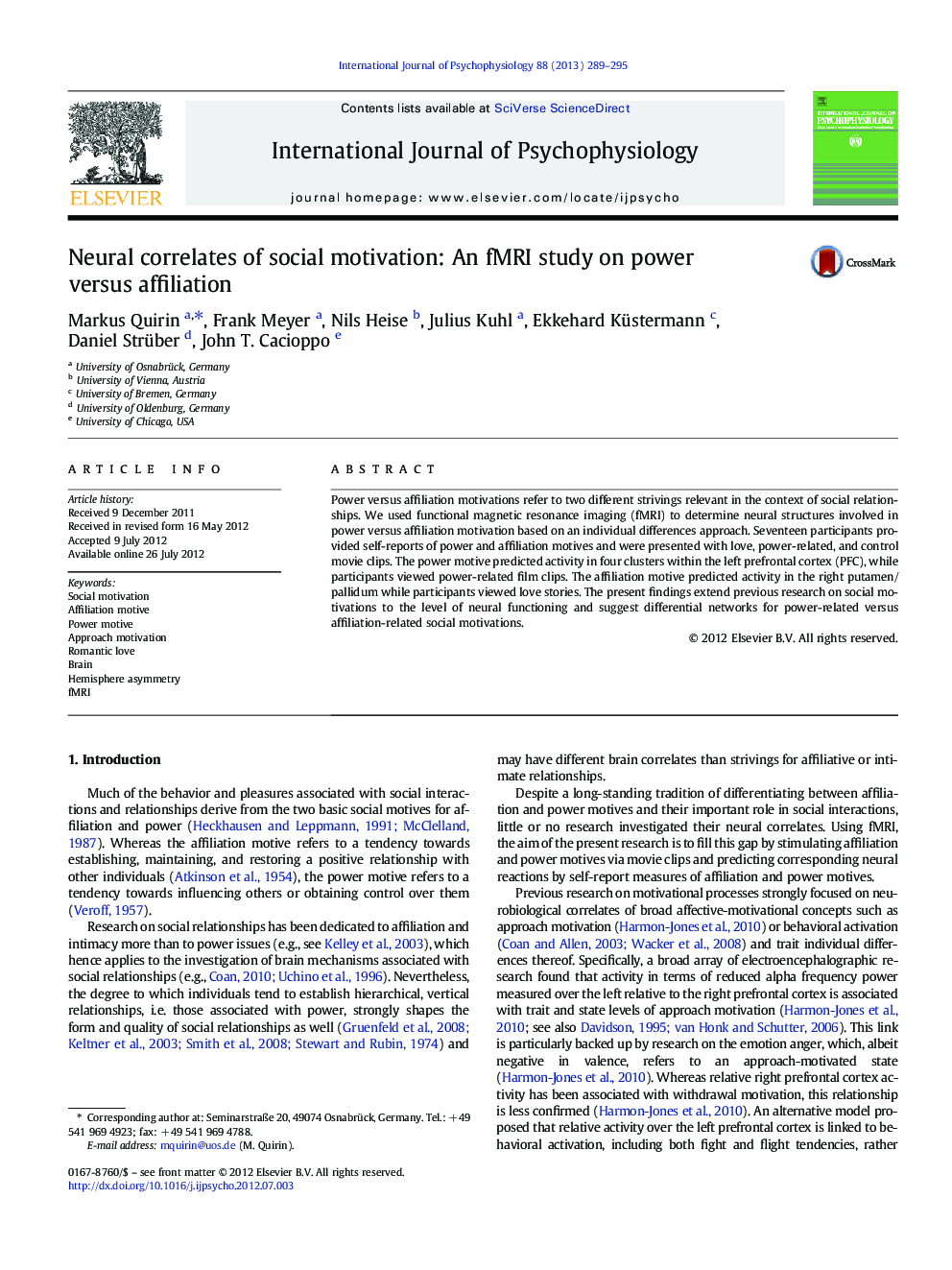| Article ID | Journal | Published Year | Pages | File Type |
|---|---|---|---|---|
| 929852 | International Journal of Psychophysiology | 2013 | 7 Pages |
Power versus affiliation motivations refer to two different strivings relevant in the context of social relationships. We used functional magnetic resonance imaging (fMRI) to determine neural structures involved in power versus affiliation motivation based on an individual differences approach. Seventeen participants provided self-reports of power and affiliation motives and were presented with love, power-related, and control movie clips. The power motive predicted activity in four clusters within the left prefrontal cortex (PFC), while participants viewed power-related film clips. The affiliation motive predicted activity in the right putamen/pallidum while participants viewed love stories. The present findings extend previous research on social motivations to the level of neural functioning and suggest differential networks for power-related versus affiliation-related social motivations.
► Affiliation motive predicted right putamen/pallidum response to affiliation cues. ► Power motive predicted left dorsolateral prefrontal cortex response to power cues. ► Affiliation and power motives were uncorrelated.
